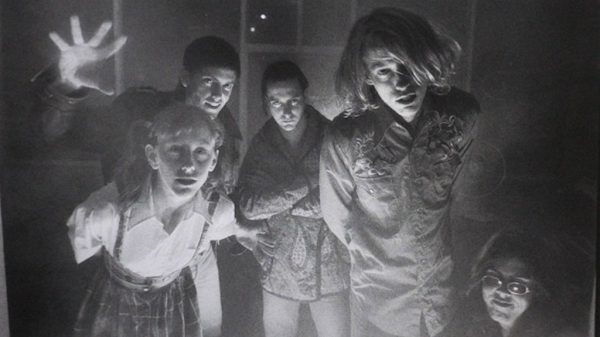First of all, I’d like to thank you all for such enthusiastic and positive feedback on Musical Shamanism 101. I honestly didn’t expect it to generate so much interest. All throughout last week, I received questions from you about whether or not the book that the article is based on will ever get published. It is my pleasure to announce that it will, and that’s because of how you motivated me to finish it. It will be available right here on CVLT Nation – we are currently considering several publishing options, so expect future updates on this matter. We have no deadlines or release dates at this moment, but we will notify you of all future developments. Be sure to follow @CVLTNation and @magdawintar on Twitter for the latest info.
In the meantime, here are some excerpts from the still unfinished book:
Darkness is the blackness of space, and the inside of our consciousness and our psyche. Inside that darkness, there can be pools of light, and that’s one method of reaching gnosis – to make the light substitute the dark. That path to that state can be very long and hard, and there’s no guarantee that it will work, because such deep, inner wisdom is different from person to person, and can mean various things. I draw my conclusions from my own introspection, and that of others I spoke with about this matter. In general, the ones I consult with come to the same conclusion: the nature of an aware, intelligent and actively thinking person is that in life happiness happens in brief bursts, and almost never lasts. Sadness, or pain, can on the other hand, lasts decades, and even entire lifetimes. You might even say that darkness is a constant in life, only briefly interrupted by moments of light. This is my own experience, I admit. In actuality, it’s not as depressing as it might sound, though. Like I said about the thoughts of stars and planets – they’re not threatening, or gloomy in any way. They’re just on another level of seriousness. That’s also my conclusion about the truth of the human experience reached through introspection – the darkness is an engulfing seriousness, which can be truly beautiful, if you learn how to appreciate it.
If the right notes are used, and the music is played loud enough, with a just a little bit of concentration and will the audience would enter a state of deeper awareness, which in turn would make them absorb the teachings of priests better. However, the agenda of the ministers wasn’t always as pure as the notes they played. More often than not, this property of music was used to manipulate people. A modern example of this is gospel singing by the self-proclaimed prophets – the TV reverends, the “televangelists.” Notice how important singing is in the entire spectacle they perform. The attendants join their leaders in song to praise the deity they worship, but on a subliminal level, something else happens – they let their guard down because of how the music makes them feel. People in such a state are much more susceptible to suggestion. Their focus shifts from the right here and now towards the transcendental, the divine. While they commune with their beliefs through song, they can be fed whatever information the reverend wants, and they will subconsciously accept it. It’s a powerful and dangerous method, and above that – it’s simply wrong. Unfortunately, those who are aware of the power of music often don’t have honest intentions. Think about this: the beating of a war drum accompanied warriors on the battlefield of history, and only relatively recently was it removed. Some armies used drums and horns, later trumpets, to issue commands – watch any Civil War film and you’ll see it at work. This war music wasn’t only used to incite fear in the opponent or to communicate with the troops – it was also to let the fighters enter a battle-trance state.















